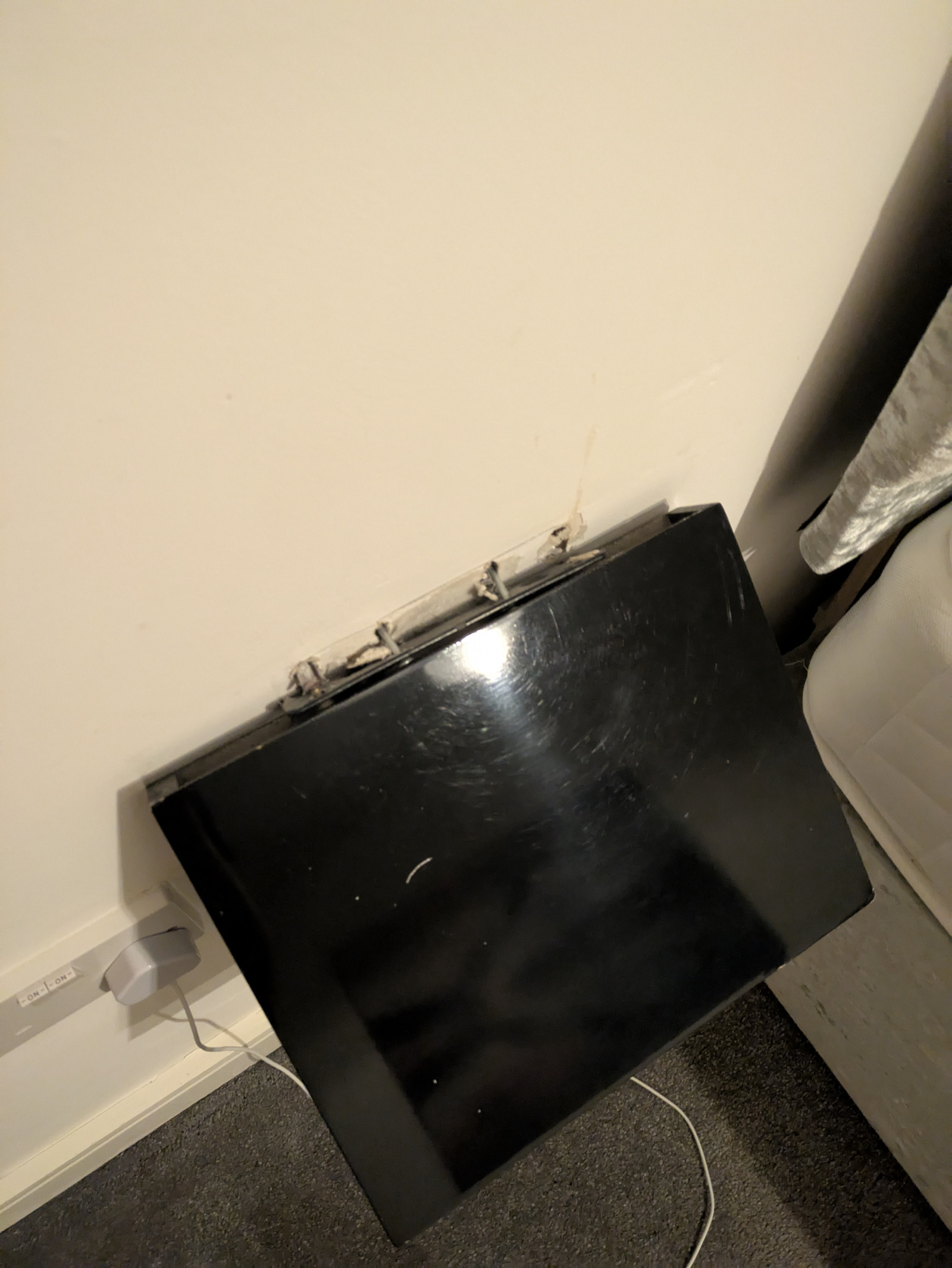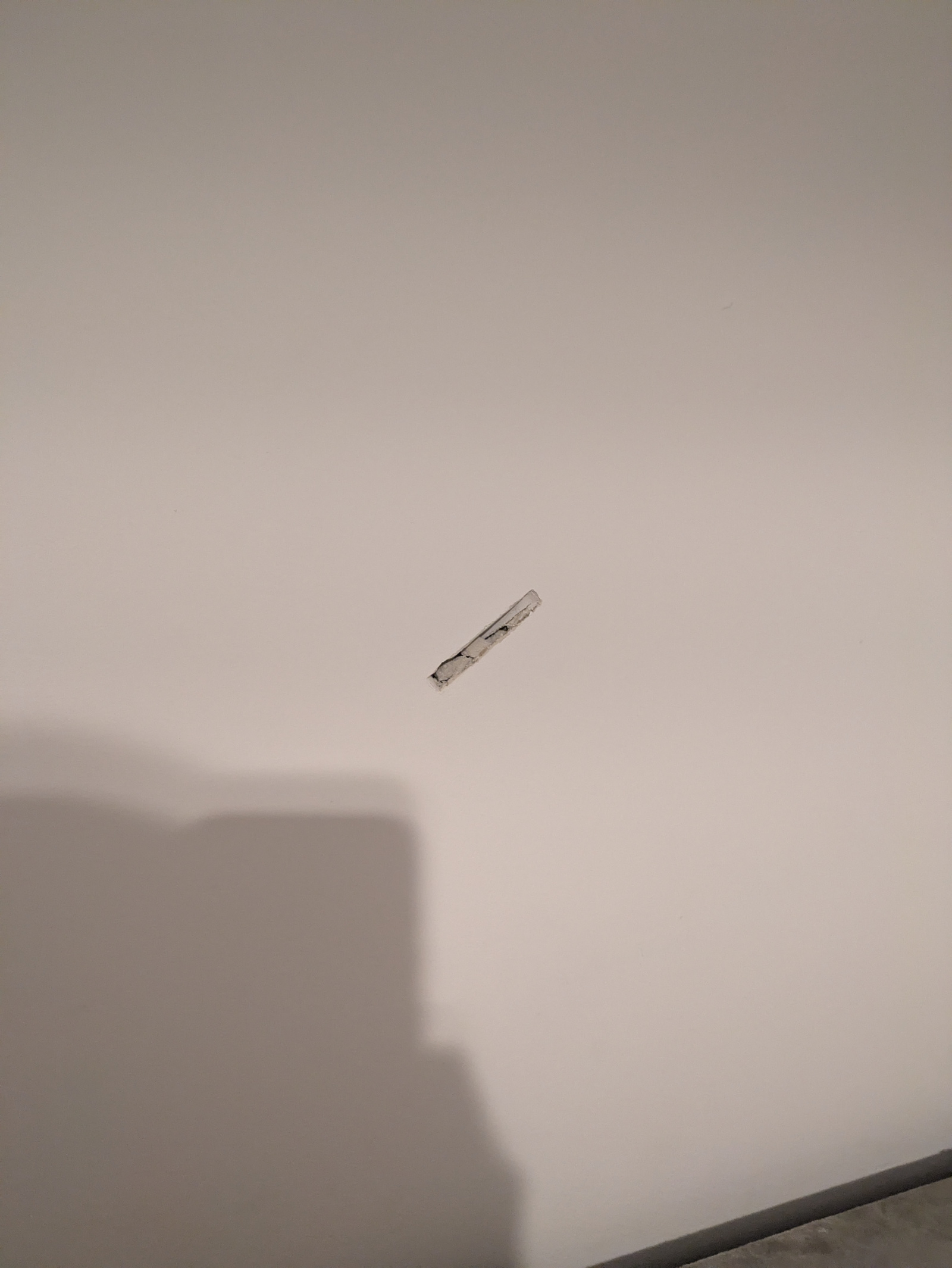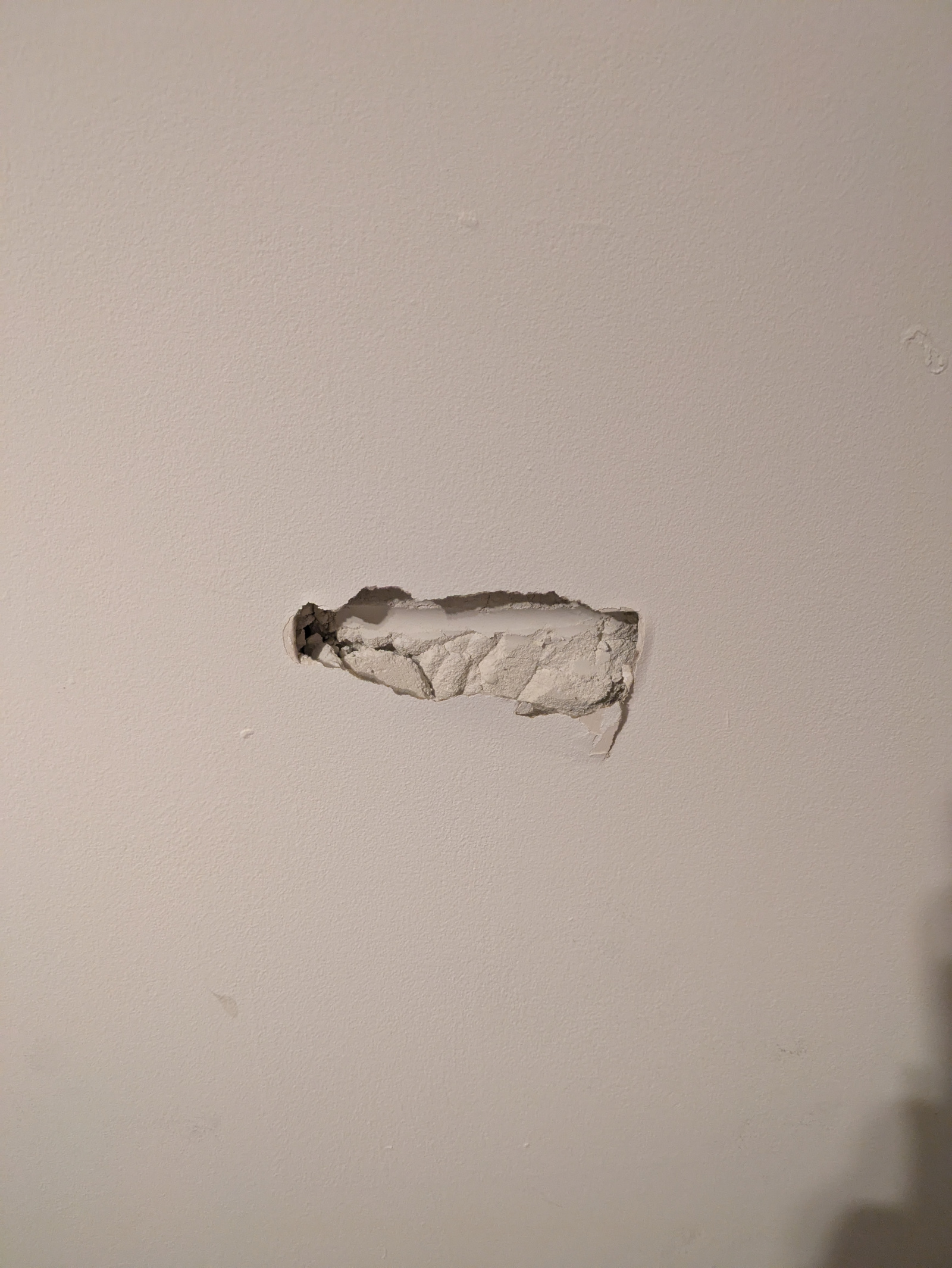We’d like to remind Forumites to please avoid political debate on the Forum.
This is to keep it a safe and useful space for MoneySaving discussions. Threads that are – or become – political in nature may be removed in line with the Forum’s rules. Thank you for your understanding.
📨 Have you signed up to the Forum's new Email Digest yet? Get a selection of trending threads sent straight to your inbox daily, weekly or monthly!
Are These Issues Easy To Fix?
Cousin_Creditor
Posts: 67 Forumite



What would I need to fix these issues? I'm talking about tools and materials that I would no doubt need to buy or borrow to fix such.
I also need to change the blinds. So I believe I need to replace the rack if that's even how you phrase it?



As you can see it's two relatively small, but very noticable, holes in the wall and a small bedside shelf that is misbehaving.
I also need to change the blinds. So I believe I need to replace the rack if that's even how you phrase it?



As you can see it's two relatively small, but very noticable, holes in the wall and a small bedside shelf that is misbehaving.
0
Comments
-
Hi.
The hole repairs are easy. It essentially requires first removing any of the surrounding damage that's higher than wall surface level, such as that loose flake in the bottom-right of the second pic. A light going-over with 120 or 180 grit sandpaper (the higher the number, the smoother) in a flat sanding block will confirm its flatness. Vacuum away any debris, and apply ready-mix filler using a filling knife, making sure it gets in firmly so's it binds to all the edges and bits in there, and then levelling it off using the knife's blade drawn firmly over the hole at around 30o.
Allow to fully dry. Sand completely flat using paper as before, check for any hollows or holidays, fill them too, repeat. The result should be perfect - you shouldn't be able to feel the edges. Once mini-roller-painted, it should be invisible. If an edge appears due to the paint - it can sometimes cause filler to swell - then 180grit perfectly flat again, and recoat.
The shelf needs to be removed, all the damage filled as above, and a new method of attaching it that doesn't require the plasterboard sheet to take the load. Eg, longer fixings that might go into a more solid material - eg block - behind the p'board. Once the shelf is removed, you should be able to peep into the hole and see if there's anything there.
The curtain track will need very secure fixings, so again this will depend on what your walls are made off.
In short, repairing holes is a perfect DIY task for just about everyone, is satisfying, and can save a fair bit of money as it's labour-intensive. Mounting things to walls is more fraught, as there are numerous methods, some of which are very tricky, and you also need to watch out for pipes and wires.
A good, general purpose filler: https://www.screwfix.com/p/no-nonsense-310-ready-mixed-filler-white-1kg/774rc
They also make a lightweight version, suitable for larger holes - their 210. Haven't used either, but reviews seem decent.
They also sell sanding blocks and paper, as do many other outlets.1 -
Thank you so much for the detailed reply. I guess I'm buying some filler, a filling knife and some sandpaper from Amazon.ThisIsWeird said:Hi.
The hole repairs are easy. It essentially requires first removing any of the surrounding damage that's higher than wall surface level, such as that loose flake in the bottom-right of the second pic. A light going-over with 120 or 180 grit sandpaper (the higher the number, the smoother) in a flat sanding block will confirm its flatness. Vacuum away any debris, and apply ready-mix filler using a filling knife, making sure it gets in firmly so's it binds to all the edges and bits in there, and then levelling it off using the knife's blade drawn firmly over the hole at around 30o.
Allow to fully dry. Sand completely flat using paper as before, check for any hollows or holidays, fill them too, repeat. The result should be perfect - you shouldn't be able to feel the edges. Once mini-roller-painted, it should be invisible. If an edge appears due to the paint - it can sometimes cause filler to swell - then 180grit perfectly flat again, and recoat.
The shelf needs to be removed, all the damage filled as above, and a new method of attaching it that doesn't require the plasterboard sheet to take the load. Eg, longer fixings that might go into a more solid material - eg block - behind the p'board. Once the shelf is removed, you should be able to peep into the hole and see if there's anything there.
The curtain track will need very secure fixings, so again this will depend on what your walls are made off.
In short, repairing holes is a perfect DIY task for just about everyone, is satisfying, and can save a fair bit of money as it's labour-intensive. Mounting things to walls is more fraught, as there are numerous methods, some of which are very tricky, and you also need to watch out for pipes and wires.
A good, general purpose filler: https://www.screwfix.com/p/no-nonsense-310-ready-mixed-filler-white-1kg/774rc
They also make a lightweight version, suitable for larger holes - their 210. Haven't used either, but reviews seem decent.
They also sell sanding blocks and paper, as do many other outlets.
1 -
Have you got a drill and masonry bits?0
-
Sadly no. I was thinking of collecting all jobs that I need doing in the flat and getting a comprehensive quote from a handyman.stuart45 said:Have you got a drill and masonry bits?
The holes in the wall, though, I fancied sorting out myself so as to save face.1
Confirm your email address to Create Threads and Reply

Categories
- All Categories
- 352.8K Banking & Borrowing
- 253.8K Reduce Debt & Boost Income
- 454.6K Spending & Discounts
- 245.8K Work, Benefits & Business
- 601.9K Mortgages, Homes & Bills
- 177.7K Life & Family
- 259.7K Travel & Transport
- 1.5M Hobbies & Leisure
- 16K Discuss & Feedback
- 37.7K Read-Only Boards



